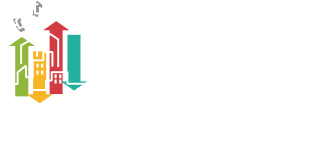University of Gothenburg is one of the largest academic facilities in Sweden with about 37000 students and 6000 employees. UoG was founded in 1891 and have five main research areas: Health, Culture, Environment, Democracy and social development and Knowledge formation and learning. Environment represents a strong Gothenburg tradition – about 40 percent of Sweden’s total research in environmental science can be linked to the University of Gothenburg and Chalmers University of Technology.
The Department of Earth Sciences (GVC) within the Faculty of Natural Sciences conducts challenging and successful research concerning Earth processes and activities. GVC hosts about 90 senior researchers including PhD candidates and has a strong research profile within three overarching fields of study:
– Climate including regional climatology, urban climatology, paleoclimatology and dendrochronology
– Marine Environment including oceanography, marine geology and costal geomorphology
– Geological resources and risks including Precambrian geology, Mineral geochemistry, Quaternary and Environmental Geology and Geophysics
The Göteborg Urban Climate Group (GUCG) was founded in the 1970s and is the leading research group in Sweden regarding urban climate and climate sensitive design. Members of GUCG conducted pioneering work on areal thermal mapping over urban areas in Sweden during the 1960s. During the last decades research has focused on projects related to the influence of the urban geometry, urban vegetation and land cover on radiation, temperature and wind. Projects also concern the relation between urban climate and air quality as well as outdoor thermal comfort. Integration of climate knowledge in urban design and planning is also an important research topic. Many of the projects are multi-, inter- and transdisciplinary, including scientists from atmospheric science, architecture, urban and regional planning, psychology, biology, and medicine. The studies have been carried out in urban areas in Sweden, Germany, UK, Japan, Botswana, Tanzania, Burkina Faso, Kenya and the Netherlands. The Urban Climate Group hosted the Sixth International Conference on Urban Climate held in June 2006.
One main research area which has evolved during the last two decades is GIScience and remote sensing related to urban climate, a research field mainly focusing on morphology analysis of buildings and vegetation as well as detailed microclimatological modelling as well as anthropogenic heat flux modelling. GUCG has developed numerous tools and software packages related to outdoor thermal comfort and urban climate applications which are freely available online.
GUCG participates in research and development projects funded from organizations such as the European Union (EU), the Swedish Research Council for Environment, Agricultural Sciences, the Swedish International Development Cooperation Agency and others.



